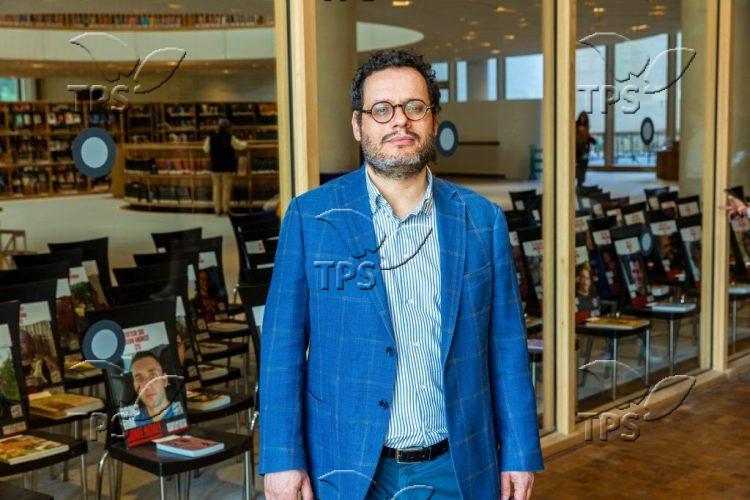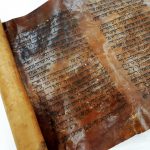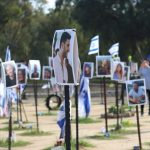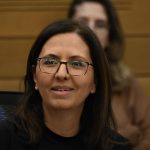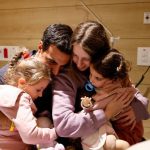Documenting Darkness: National Library of Israel Preserving ‘Collective Memory’ of October 7
Jerusalem, 13 February, 2024 (TPS) -- The National Library of Israel has embarked on a massive project to collect and archive any materials from around the world that have been published about the October 7 massacre, both the good and the bad.
While scholars and the curious public explore the new library building and its Israel, Judaica, Humanities, Islam, and Gershom Scholem collections, Dr. Chaim Neria is quietly gathering more recent –and sometimes painful — printed and digital items associated with the day 1,200 Israelis were killed.
“The significance of this project to Israel and the Jewish people globally stems from its role in preserving and documenting our history, culture, and the diverse experiences of Jewish communities. It’s a crucial endeavor for understanding our collective identity and ensuring that future generations have access to our history and heritage,” Neria, curator of the library’s Haim and Hanna Solomon Judaica Collection, told the Tazpit Press Service about the library’s “Bearing Witness” project.
“By contributing to this work, I feel connected to a larger purpose that transcends my individual role, contributing to the preservation of our collective memory,” Neria added.
As with almost everyone in Israel, Neria is connected to an October 7 victim. His 31-year-old cousin, David Meir, a member of the elite Sayeret Matkal unit, was killed trying to rescue Israelis at Kibbutz Be’eri, where Hamas terrorists massacred 130 Israelis.
This makes the project personal for Neira, which could be sensed when he presented examples of the myriad types of materials it has collected to date. Four months since that dark day, he is visibly uncomfortable with even looking directly items involving any form of graphically violent content.
“Such materials require a careful approach to ensure they are handled sensitively and ethically,” Neria said. “But sometimes one little story captures your imagination.”
The content of these materials is not relevant to this project. Neria noted. They could be bulletins about what happened, advertisements for events, special prayers or religious materials written in the wake of the attack, or political statements of some sort. No matter how large or small — from a single synagogue located in a remote corner of the world to a major non-Jewish organization or government body — if someone printed any material about what happened on October 7, 2023, the National Library wants it.
Holocaust Parallels
The only criterion is for adding something to the National Library’s collection is that the item has to do with October 7. And the goal is to save everything.
Such documentation was made after the Holocaust, but no one thought to collect all such materials from while it was happening, and certainly not going back to before the Nazis took power in Germany, Neria explained.
Indeed, the October 7 attack has been compared by many to the Holocaust because Hamas intended to murder as many Jews as possible.
Much of these materials today do not need to be acquired on paper as they are all also available in digital formats. In fact, most of what Neria has collected was found online, from different websites and social media outlets. Unfortunately, much of the negative content, including videos posted by the terrorists themselves, were deleted before they could be copied and saved.
“Different materials, printed materials are at least survived for some time,” Neria explained. “So even if you don’t act immediately, so you can act later, walk and collect. So today, if it’s online anywhere, social media, any kind, websites, you can get it. But if it’s already down…”
Neria spoke about how the terrorists themselves provided much of the evidence of their atrocities. This is because they wore body cameras and filmed their attacks. They even live-streamed some of what they did on social media.
“We know that the terrorists started by going live on Facebook,” explained Neria. “Then they realized that it’s not good for their prestige or whatever, so they downloaded, they tried to take off these materials.”
“It was actually citizens that helped the [Israel military] and the government by totally initiative that came from them as citizens and they were using many high-tech companies. So first to download the videos, then using all kind of algorithms to understand where each video was taken, identified faces, helping actually to the IDF to get information. And maybe in the future, it will be in information that can be used to in legal procedure.”
More than 100 organizations around the world are now actively searching for materials to provide to the project, such as the Shoah Foundation of the University of Southern California, which is also collecting the testimonies of Israeli survivors of Hamas’s Oct. 7 massacres. The foundation is best known for its videos recording the testimonies of more than 3,000 Holocaust survivors and its association with Academy Award-winning director Steven Spielberg.
“We will be the house not just for the oral testimonies, but for all other materials. So eventually we will create here an archive that will include oral testimonies, videos, printed materials, prayers, pictures,” and more Neria said.
The library estimates that project will last at least five years, a timeframe which Neria said “reflects the depth and breadth of the work required to comprehensively document and analyze the relevant events and their impact on Israel and Jewish communities globally.”

